 This is a very friendly bulldog we saw a couple of weeks ago on out trip to Tlaquepaque. His face was definitely worth a photo.
This is a very friendly bulldog we saw a couple of weeks ago on out trip to Tlaquepaque. His face was definitely worth a photo.This past week we were scheduled to drive to the Michoacan town of Zitcacuaro, east of Morelia to visit a Monarch butterfly sanctuary, but the weather failed to cooperate. Of course, everyone knows that this is the dry season in central Mexico, so every day is supposed to be bright and sunny. However, not this year. Last week we had torrential downpours from the el nino in the Pacific Ocean. Since we were going to get to the butterfly sanctuary by horseback, riding up a muddy mountain in the pouring rain did not seem like a good idea. As a matter of fact, 13 people were reportedly killed in this area of Michoacan by flooding and mudslides as a result of the rain. Fortunately for us, we were able to postpone our trip until February 21 without a penalty, so I hope to be able to provide photos and impressions of the Monarch sanctuary in a couple of weeks.
Our friends Curt and Judy returned to Maine last week. We were able to travel into Guadalajara before they left to see a performance of the Jalisco Symphony Orchestra at the renowned 19th century theater, Teatro Degollado, in Guadalajara. We first ate supper at a restaurant in the historic central district, Fonda de la San Miguel, which used to be a monastery. The food and atmosphere were wonderful. Then we walked to the theater. This building, dedicated in the 1860's, is modeled after the La Scala Opera House in Milan, Italy, so it's quite a treat just to see a performance there. We found seats on the first balcony for 140 pesos (about $11). We heard two Mexican pieces, one a world premier, and after intermission, Tchaikovsky's fifth symphony. Here are some photos of the evening:



Another big event this past week or so was the book signing even held at the Casa del Sol B&B in Ajijic. I had planned this event to roll out my new book, Agave Blood. I joined up with an interesting group of lakeside women who had written an anthology several years ago, called Agave Marias. Thus, we called our event, "Two Agaves, No Tequila!" We had a good crowd on hand for the readings and the signings. I sold 18 books, which put me well over the break-even point in book sales. Most of all, however, it was a lot of fun for everyone.



One more photo for this post. Chuy has formed a special relationship with Horacio, our gardener. Whenever Horacio comes to work, Chuy likes to follow him and sit and watch as he digs in the dirt and generally does things which bring him down to Chuy's level. Here they are together:

You probably heard or read about the terrible massacre of students last week in the border city of Juarez. This is another example of the terrible drug-related violence that has plagued Mexico since President Calderon declared war on the Narco gangs. This publicity causes many to fear even coming into Mexico. Here's an article from the AP which address the issue of Mexican violence in a more balanced fashion:
Despite drug war, Mexico less deadly than it was a decade ago
Mexico City's homicide rate today is about on par with Los Angeles and is less than a third of that for Washington, D.C.
The Associated Press
MEXICO CITY — Decapitated bodies dumped on the streets, drug-war shootings and regular attacks on police have obscured a significant fact: A falling homicide rate means people in Mexico are less likely to die violently now than they were more than a decade ago.
It also means tourists as well as locals may be safer than many believe.
Mexico City's homicide rate today is about on par with Los Angeles and is less than a third of that for Washington, D.C.
Yet many Americans are leery of visiting Mexico at all. Drug violence and the swine-flu outbreak contributed to a 12.5 percent decline in air travel to Mexico by U.S. citizens in 2009, according to the U.S. Department of Commerce, a blow to Mexico's third-largest source of foreign income.
"What we hear is, 'Oh the drug war! The dead people on the streets, and the policeman losing his head,' " said Tobias Schluter, 34, a civil engineer from Berlin having a beer in Mexico City. "But we don't see it. We haven't heard a gunshot or anything."
Mexico's homicide rate has fallen steadily from a high in 1997 of 17 per 100,000 people to 14 per 100,000 in 2009, a year marked by an unprecedented spate of drug slayings concentrated in a few states and cities, Public Safety Secretary Genaro Garcia Luna said. The national rate hit a low of 10 per 100,000 people in 2007, according to government figures compiled by the independent Citizens' Institute for Crime Studies.
Mexico City's rate was about 9 per 100,000 in 2008, while Washington, D.C., was more than 30 that year. Chihuahua, home to Ciudad Juárez, had a horrifying homicide rate of 173 per 100,000 in the city of 1.3 million, or more than 2,500 murders last year.
"In terms of security, we are like those women who aren't overweight but when they look in the mirror, they think they're fat," said Luis de la Barreda, director of the Citizens' Institute. "We are an unsafe country, but we think we are much more unsafe that we really are."
Of course, drug violence has turned some places in Mexico, including the U.S. border region and some parts of the Pacific Coast, into near-war zones since President Felipe Calderón intensified the war against cartels with a massive troop deployment in 2006. That has made Ciudad Juárez, across the border from El Paso, Texas, among the most dangerous cities in the world.
Experts say while drug violence is up, land disputes have eased. Many farmers have migrated to the cities or abroad, and the government has pushed to resolve the disputes.
De la Barreda attributes the downward trend to a general improvement in Mexico's quality of life. More Mexicans have joined the ranks of the middle class in the past two decades, while education levels and life expectancy also have risen.
Critics of Calderon's drug war say his assault on cartels is giving Mexico a reputation as a violent country but doing little to stop the drug gangs' work.
"It's a bad international image that affects foreign tourism and foreign investment," said Jose Luis Pineyro, a sociologist at Mexico's Autonomous Metropolitan University.
Drug violence has encroached on the resort towns of Zihuatanejo, Acapulco, Puerto Vallarta and Cancun.
The U.S. State Department travel alert says dozens of U.S. citizens living in Mexico have been kidnapped over the years, and warns Americans against traveling to the states of Chihuahua and Michoacan.
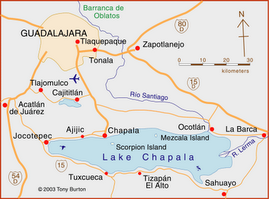




















































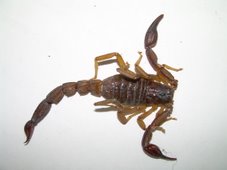

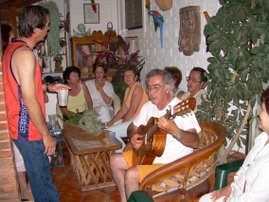






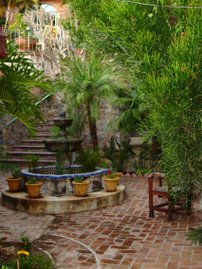
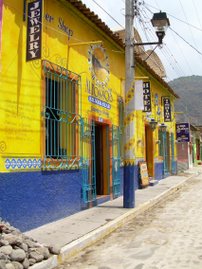
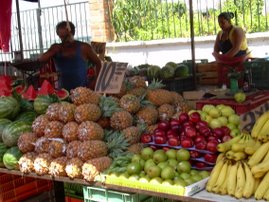


No comments:
Post a Comment